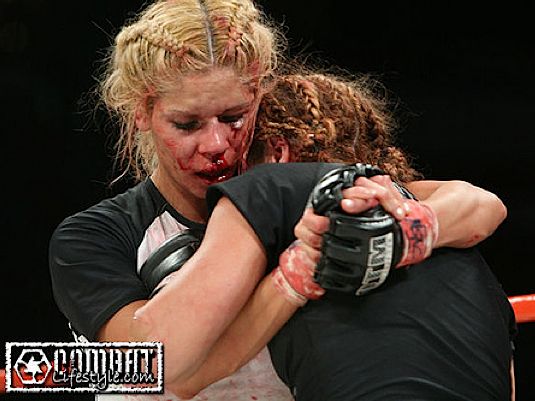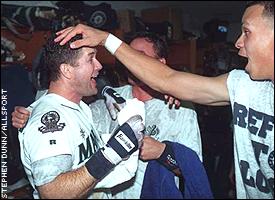Seahawks - Redskins: SOS
.
SportsMemo gives us "one of the best blog posts in history" for the first weekend of the NFL playoffs. They've found the Rosetta Stone of sports handicapping -- in the NFL, just decode the weekend using Strength of Schedule.
They report that since 2002, teams with a tougher Strength of Schedule won 29 games and lost 11 -- regardless of home or away location. And where the SOS difference was large, the teams with tougher schedules went -- wait for it -- 18 and 3 straight up.
This is talking about first round only. Why did they edit out SOS in further rounds of the playoffs?
- CYNIC: because that would reveal that the method doesn't work.
- BELIEVER: because after the first round, the cream has risen to the top and the Patriots Factor begins to swamp other factors.
SportsMemo explains that when the NFL went to eight divisions, the disparity of schedules become larger. Seahawks fans can certainly believe that -- they face three of the NFL's most ferocious defenses home-and-away. This year, the Seahawks also had to face Green Bay, New England, Chicago on the road, etc.
SportsMemo gives the following matchups this weekend:
| Road | SOS | Home | SOS |
| Cincy, +4.5 points | 31 | Houston | 27 |
| Minnesota +8 | 6 | Green Bay | 8 |
| Indy +6.5 | 32 | Balmer | 18 |
| Seattle -3 | 5 | Skins | 15 |
They conclude that the right choices (against the spread, now...) are Houston, Minny, Baltimore and Seattle. Um, no. As good sabermigos you realize that the SOS differences in the first two lines are nothing but noise. But the differences in schedule in the last two lines are vast, and worth consideration.
.................
Supposing that the Ravens and Seahawks actually were much more likely to win than people realized. Why would that be?
First of all, it goes back to our question "Why would you prefer one 3.50 ERA pitcher against another?" Well, what if one had a 3.50 ERA in the American League and the other had it in the PCL? There is no question that Russell Wilson has, for sixteen weeks, been facing much tougher defenses than has Robert Griffin III.
This could imply that the PCL pitcher would actually run a 4.50 ERA under the same circumstances as the AL pitcher, who ran the 3.50. As Cool Papa pointed out, 21st-century football analysis revolves around the question of "WHICH three-yard run was the better run?"
And if so, it could be that RGIII would have run much worse stats than he did, if he'd had to face the NFC West all year.
................
But! That isn't really the factor that SSI is looking at. Dr. D thinks that RGIII would have done fine against the NFC West. The hidden factor here is that you have one boxer who's training kinda hard, and boxing against setups, and another one who's going all Evander Holyfield, tripling up his training and fighting all the toughest hombres he can possibly find.
Going into this weekend, rookie QB Wilson has a tempered-steel season behind him. And he's gotten better, better, and better against these ferocious defenses. When playoff action hits, and torn ACL's start piling up, Wilson may be better prepared for the extra level of intensity. After all, nobody's going to show him anything worse than he's already seen from the 49'ers.
I don't say the Seahawks are a gimme this weekend; factoring in the refs I think they're underdogs. But the schedule they've faced, and the way they got better and better against it, man alive they look dangerous.
Be Afraid,
Dr D
Edgar for the HOF?
.
Tongue in cheek, we like to refer to a 'Founding Father'. But: not-tongue-in-cheek, wouldn't it be great to know how George Washington and Benjamin Franklin and Thomas Jefferson would vote on today's issues? That is, if they were brought fully up to speed on 2013 society's context and all of the point/counterpoint?
Here's Benjamin Franklin, as it were, on the issue of Edgar Martinez and the HOF. There's probably no sector of sabermetrics on which James specializes more than the HOF.
........................
I'm wide open to an argument against Edgar Martinez' HOF candidacy. But that argument has to be a little bit more than "We're not going to put a DH in unless we're forced to," which is what they mean when they say "the standards for a DH should be very high."
We asked James for a way to organize our thinking as to the 9,000 variables in this equation. He replied at Bill James Online:
.
Re: your interesting Todd Helton remark that with sabermetrics, we have little trouble with weird contexts and numbers.Edgar as a Hall of Famer? ... there was an interesting article in the local newspapers about two Warts Spiders sitting in the press box arguing it. The pro-Edgar guy pointed out at Ichiro and asked, "Who would you rather have in the lineup today, Ichiro or Edgar?" and the anti-Edgar-HOF guy shot back, "Edgar, of course." Because the anti-Edgar guy supports Ichiro as a certain HOF'er, but this logic still didn't sway him. ...My question: To what extent would you say that a subconscious distaste for the DH is affecting the Edgar debate?To get a crystal-clear way to organize our thoughts, would you essentially apply the paradigm of "Edgar as lousy first baseman," or would you resist comparing this DH to any existing template, or go off Win Shares, or how would you clear it up? - thanks, JeffAsked by: jemanjiAnswered: 1/4/2013Well, the best I can do is this. A 300-game winner belongs in the Hall of Fame. A third baseman ordinarily wins 250 games with his bat, 50 with his glove, or maybe it is 220 and 80. Edgar won zero with his glove, but he won 300--and more--with his bat. So, in my view, he belongs.
.
By the way, some of you had wondered about James' curt response to my earlier Jose Lopez question. Two things:
1. Since then, I let him know who Jemanji is and since then we've been cool.
2. James can be gruff, especially when he thinks people are being stubborn, but it's a kind of gruff that doesn't bother me. James doesn't jab a person in the back with snark, and then duck around the corner. He doesn't discourage debate -- either on the first round or the fifteenth round. He doesn't resent lack of faith in his authority; he doesn't care at all whether you show Proper Deference or whether you don't.
He will stand in the middle of the ring and slug away as long as you want to. He fights like a man, and he'll sometimes throw the first punch -- but when he punches you get to punch back, so I respect him as a man.
If, on the 15th round of the debate, you prove his position wrong, he's liable to turn around and publish a detailed article explaining where he went wrong, and calling attention to the real truth on the matter. (This may be what is now occurring with respect to that original Jose Lopez / Wil Myers issue ... developing ...) That's a little bit different from some of the local hit-and-run snark that Dr. D has objected to over the years.
...............
The Helton question, since we're on the subject, was also interesting and that one went
.
As Todd Helton's career winds down, wondering about your thoughts on it. He does well on Hall of Fame career standards and monitor despite his late start, and had a pretty remarkable peak (2000-2004), as measured by both traditional stats and WAR, though not Win Shares (147). He never did terribly well in MVP voting, due both to the era (Bonds was pretty good those same years) and the park. I view him like Norm Cash - a good, not great, player who statistics are unusually hard to assess due to context and who will have a hard time with HOF voters. Your thoughts?Asked by: RobinsongAnswered: 1/3/2013I think he is a Hall of Famer, period. I think he is comfortably above the Hall of Fame standard.He is more like Chuck Klein, I think, than any other candidate. Like Klein, he had just absolutely fantastic numbers, but in a time and place where many players had unusual numbers, and he never achieved public acceptance as a true superstar.When the numbers are way out of whack, we start to ignore them. I always remember Dick Stuart talking about hearing the Pirates get real excited about some minor league first baseman who had hit 35 home runs in 1955 or 1956--but when he hit 66 home runs for Lincoln in 1957, they couldn't deal with that so they just pretty much wrote it off as a fluke. When the numbers get outside of normal boundaries, we don't know how to process them in the usual way, by reading the statistics as a kind of language, so we start ignoring them.But with sabermetric methods we can process unusual numbers as comfortably as normal numbers. When we do that, Helton is actually a far better candidate than, for example, Chuck Klein or George Kelly or Bill Terry. Cash is a misleading comparison because Cash is a very underrated player. You have to compare him to a player who has been fairly and properly evaluated by history, like Greenberg or Johnny Mize or Garvey or Boog Powell or Killebrew. It is my opinion that when you put him in line with that group, he's a Hall of Famer.
.
I thought that was an interesting observation -- that one of the best things about sabermetrics is that it is great for attacking weird questions.
Cheers,
Dr D
Australia’s Crocosaurus Cove
If you happen to be into crocodiles or just reptiles in general, there’s a place in Australia that is devoted to bringing visitors the best of what the country has to offer. It’s called Crocosaurus Cove and it’s located in the heart of Darwin City. It boasts some of the largest saltwater crocodiles in the entire country as well as the world’s largest display of regional reptiles.
While at the Cove, visitors have the chance to participate in many interesting reptile-related activities. You can hold a real live baby crocodile, watch the staff as they feed the many exotic creatures and even swim in an aquarium right next to a population of crocodiles.
There’s a turtle sanctuary and aquariums filled with many unusual Australian fish. If you’re feeling like feeding the crocs yourself, you can use a fishing line baited with a hunk of meat to try to pull them out of the water. All this is accompanied by many exhibitions of Aboriginal art, highlighting the presence of the native people in the Darwin region.
But what Crocosaurus Cove is best known for is the infamous Cage of Death. You can, if you happen to be brave enough, sit in a submerged glass box. In the surrounding water are some of the largest saltwater crocs in captivity. While they’re generally mellow, even with a meal so close by, sometimes they get agitated and will try to strike the swimmers through the glass.
The Cove focuses on letting visitors interact with the animals on display, so it can be a great place to both see and learn about all these unique Australian creatures. It’s not too expensive to get in, which makes it a good destination for families on vacation, although the Cage of Death will cost you a pretty penny. $120 worth of pennies, in fact, but you can get a deal of $160 for two if you bring a friend along.
Georgia’s Vardzia Cave Monastery
Not to be outdone by the burrowing population of Turkey’s Cappadocia, the country of Georgia boasts its own history of underground cities in the form of the Vardzia Cave Monastery. This network of caves was carved from the solid rock of the Erusheli Mountain to serve as both palace and place of refuge for Queen Tamar and her people.
The city has its origins in the 12th century, when the Mongol hordes were making their way across Asia and toward Europe. In response to this threat, Queen Tamar commissioned the construction of this underground complex in the year 1185. Though the city was sound and performed its intended function for a time, an eventual earthquake would split the mountain it was built into, caving in much of the network and leaving a good portion of it exposed to the world.
In all its glory, the complex was composed of 13 levels and more than 6000 rooms. In addition to thousands of living quarters, the city had all the necessary functions of existence during its time period. There is a throne room, several
chapels, wine cellars, a meeting room, a forge, a bakery and more. In order to provide for the needs of the interior dwellers, the outside of the mountain was terraced and used for farming.The earthquake came and destroyed much of this hard work in the year 1283, less than 100 years after the city was finished. Around two-thirds of the interior structures were destroyed, making the use of the complex as a city no longer viable. Since then, it has mainly served as a monastery.
Today, visitors can go and see what managed to survive the test of time. Around 300 rooms and a handful of monks are open to see, along with the remains of many of the systems that once made the complex livable. In addition to the caves and rooms, the open face of the mountain provides many beautiful views for those that make the hike to the upper levels. If you plan on taking a tour, however, remember to bring your own flashlight, since there is no lighting in most of the complex remains.
Youth activists change the world
Lots of people seem to dislike children today. There are restaurants and hotels banning them while people join “child-free” clubs and sport “My dog is smarter than your honor student!” bumper stickers on their vehicles. Given that all adults were once, after all, children themselves, this hatred is mind-boggling to me.
Perhaps such anti-child people would embrace our youth if they became aware of how amazing children are. Did you know that about 55 percent of America’s youth volunteer, compared with only 27 percent of adults? There are kids at every car wash, bake sale and canned food drive—because of their idealism, their commitment to their community, or for whatever other reasons—and while there’s often an adult or two to help move it along, youth are at the heart of changing the world. I have to wonder if any of the “child-free” club members have benefited from community gardens or building murals or garbage clean-ups or food drives that America’s youth organized.
When I was a child, my parents took us everywhere. We were often an afterthought, but we were always present and running around loudly with our cousins. Nobody ever scoffed, “Children should be seen and not heard!” to me, though the outdated sentiment seems to be more prevalent in our culture today than ever.
If anything, children should be heard often and by everyone. It is their world tomorrow that we are working so hard to improve today; do they not deserve a say in it? They are already not allowed to vote for leaders who think of their best interests as we are—why demand further voicelessness?
No more animal cruelty in the military
President Obama has often displayed his compassion for animals. I remember writing about his talks with animal rights groups back when he was campaigning, as well as his search for a good hypo-allergenic dog for his daughters, and feeling like this was the man I really wanted as president (for many other reasons as well, of course). But I haven’t really heard of many actions he’s taken via legal course to help animals until today.
Many people may already be aware of the military’s cruel animal tests that include dismemberment, shooting and many other violent acts against animals. This heinousness affects over 10,000 animals a day. Not only do these cruel testing measures obviously harm and kill animals; they also display and promote a complete lack of compassion for them to begin with, fostering even more complacency when it comes to violence against animals. Military trainers and participants of the experiments have even been caught on footage joking and singing about the torture.
I know lots of animal rights groups have been fighting this treatment for years, but the protests seem to have fallen on deaf ears until now. President Obama has just signed a bill into law to require the military to create a plan to phase out these tests by March of this year.
I don’t know about you, but this timeline seems very impressive to me. Usually when a law goes into effect, it takes a year or several years to fully enact it. The fact that he’s putting a spring date of this very year out there as a deadline displays his commitment and a sense of urgency against this cruelty.
I hope it’s also an indication of swift movements from the president to come regarding other important issues that have taken so long, often, albeit, to filibusters from the right. As usual, they may attempt to block this legislation, so it’s important that people who care continue to keep up the momentum. You can click here to learn more and to add your voice of support to a letter to the Department of Defense, asking that the tests stop and be replaced with more humane methods.
These violent tests will soon be replaced with human simulations and other modern methods that do not require animals—which, medically speaking, are typically more accurate than using live animals to begin with, begging the question why we don’t use these affordable, accurate measures across the board.
Bad news, Grimm fans
After being informed that we’d return to new episodes of our beloved Grimm this month, the sadistic folks over at NBC decided to change their minds. Instead, we’ll have a new show this month called Do No Harm replacing Grimm until spring! This announcement was not even vaguely apologetic, by the way…
I don’t know about you, but I may grow a few gray hairs waiting for my Monroe to return. And if Juliette ends up with the captain, I may just barf.
The new show, Do No Harm, seems interesting enough, even if the plot’s been done several times before (but then again, so has Grimm’s, in different incarnations, right?). It’s a Doctor Jekyll/ Mr. Hyde type show, but it’s about a doctor who has to keep the darker version of himself under control. Why does this reek of Dexter to me? It’s not the same premise, but it feels like trying to piggyback off of Showtime’s success.
Will you be watching Do No Harm? I just might to see what it’s like—there is that literary monster component that we love in Grimm, after all—but I think I’ll mostly just pout until March 8, when Grimm is supposed to finally return.
How to teach an etiquette class
Knowing the proper etiquette for any situation can mean the difference between getting a job, impressing the in-laws, or retreating home with head hanging low. As more people learn the value of etiquette, the demand for learning such skills continues to increase. With the proper skills and training, teaching etiquette classes for both adults and children can be a lucrative business.
Step 1: Review your etiquette skills by reading books such as Judith Martin's Miss Manners' Guide to Excruciatingly Correct Behavior or Amy Vanderbilt's Complete Book of Etiquette. To teach children, review Sheryl Eberly's 365 Manners Kids Should Know. Visit the International Etiquette Centre to learn quick etiquette tips or take a course to become an etiquette consultant.
Step 2: Plan your class by creating your own curriculum or use prepackaged teaching curriculum materials, such as the various programs at Etiquette Outreach or Etiquette Moms. Decide how often, where and when you will teach. Set your class prices.
Step 3: Announce your class to local schools, libraries, businesses or other locations that may want to utilize your services. Make flyers or business cards, post ads and advertise via any other local venues.
Step 4: Hold your class on the date and time announced. Pass out any handouts or reading lists you have prepared and announce expectations for the course.
Step 5: Conduct your class according to your teaching plan. Use props such as dinnerware and phones to demonstrate proper etiquette techniques. Allow students to practice these techniques together through role playing.
Step 6: Wrap up your lesson with a review and ask if there are any questions. Give a verbal quiz if you wish to assess how much students learned. Provide assignments for homework if you will have multiple class sessions.
Some tips to keep in mind:
- Churches often charge small fees or allow free space for class use.
- It can be helpful to create a website to provide further details about your classes, such as contact information, dates and pricing.
- Check to see if you have any local homeschooling groups that may be interested in your etiquette classes.
- Local schools, businesses and libraries may also wish to employ you to provide classes or assembly content.
- Remain professional and courteous while teaching in order to lead by example.
Be up front with clients about your experience and credentials to avoid possible litigation. You may also wish to create a release form for students to sign stating that your class does not guarantee a job or any other direct benefits.
Links for January 4, 3013
Is juggernaut Japan being driven to destruction? japantimes.co.jp











